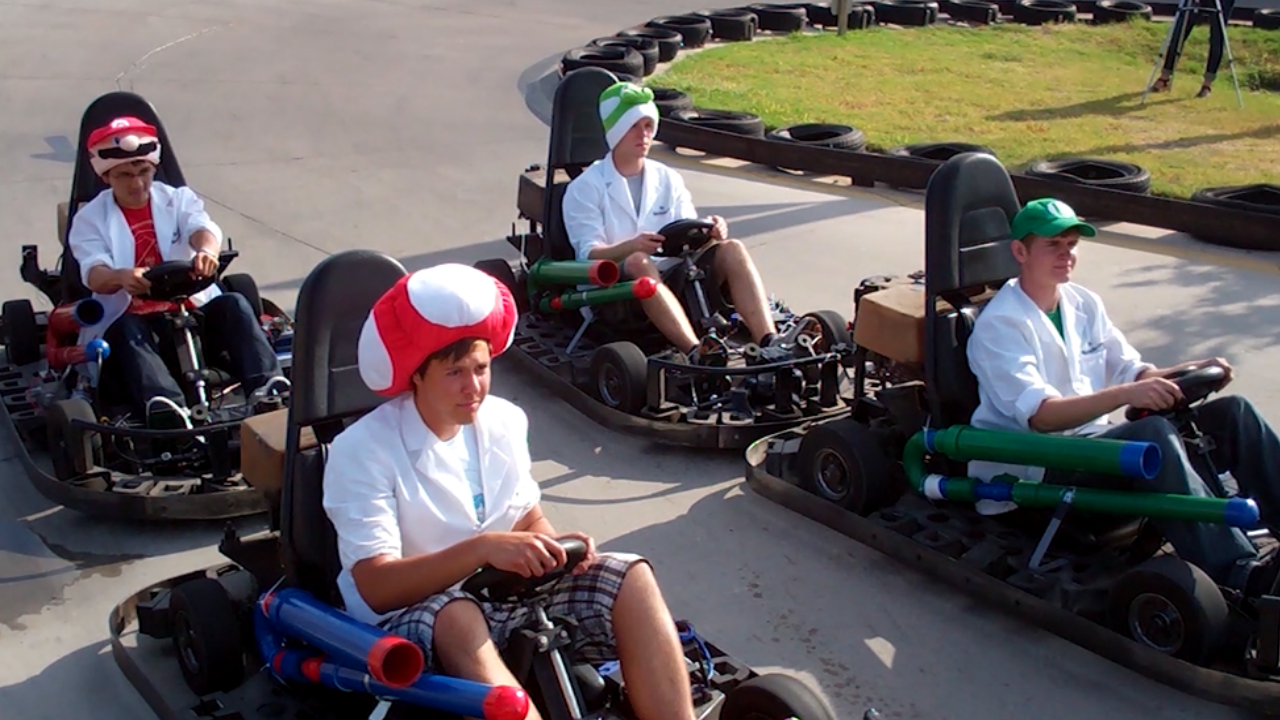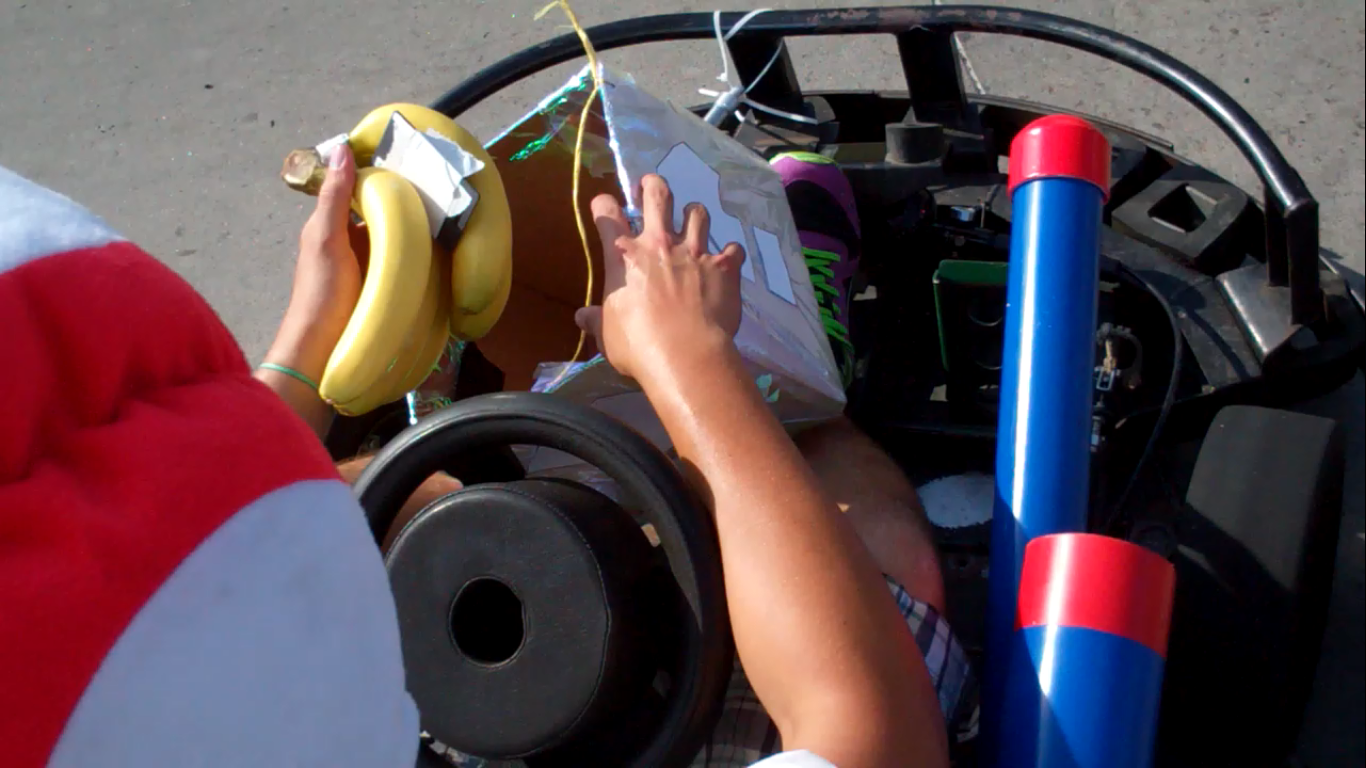What do Mario, bananas, Yoshi, and turtle shells have to do with engineering? Two engineers have brought the Nintendo video game, Mario Kart, to life on a track at Austin’s Park in Texas.

Real-life Mario Kart. Players line up at the starting line. (Image via Waterloo Labs)
Hunter Smith and Ben James combined their love of go-karts and the Mario Kart video game to create a life-sized, fully functional Mario Kart scenario, equipped with power-ups such as “koopa” shells, banana peels, and “starmen.” (Just grab a question mark hanging above your head on the track!)
How they did it
First, the duo had to create a kart in which players could automatically control gas, brakes, and steering. Then came the tricky part. This kart had to be able to launch items (like koopa shells) at people and recognize when it runs over items (like banana peels).
So, they incorporated two systems into this real-life video game.
First a servo motor, similar to an electric motor with built-in potentiometers that allow the driver to control how much throttle is given, and the second system is a low-pressure system. The low-pressure system includes a high-pressure tank and a low-pressure regulator, as well as some electronic valves and pneumatic pistons that aid in wheel and brake function.

The technology incorporated into the go-karts allow this player to swerve away from this “koopa” shell thrown in the road by another. (Image via Waterloo Labs)
The components of the cars are controlled by a real-time ruggedized microprocessor that can also communicate with the other cars.
What really brought the game to life was the incorporated RFID technology that allowed the engineers to include Mario Kart aspects such as throttle control, hard-turn steering, and brake functions. RFID technology consists of a tag and a meter. Just stick the tag inside of an item (such as a banana peel) white the meter stays on an object (such as a go-kart). The information is sent through the air to the meter when something happens to the tag, telling it what should happen in this case to the kart).
Each item a player picks up will dictate the behavior of their kart. For example, the tag on a banana peel will tell the kart that it should slow down or swirl out of control.
Player grabs a question mark box to recieve banana peel power-up. (Image via Waterloo Labs)
For a complete breakdown of the technology behind the Mario Kart cars, visit Waterloo’s website.
The video below shows how engineers Smith and James brought the beloved Nintendo video game to life.
Advertisement






